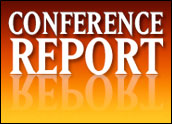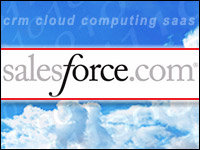
It’s sort of like the funny story about a young person discovering that Paul McCartney was in another group before Wings. Marc Benioff had another company sandwiched in between his Oracle days and founding Salesforce.com. So for those of us who knew that, Database.com had the same kind of retro vibe when it was announced at Dreamforce.
Database.com was Marc’s other company, and I had assumed that they’d simply kept renewing the URL registration for the last 10 years, but I was told differently. At any rate, Salesforce is now in the database business. I guess if Larry Ellison can buy Sun Microsystems and jump into the hardware business, then Marc can get into the database business.
In truth, Database.com is more of a confirmation of what Salesforce had been doing through Force.com for a long time. The big difference now is that anyone with almost any application development tool can build an application that leverages the database in the cloud. There are some other differences too. For instance, the application you build using Database.com is separate from the Salesforce and Force.com world, meaning that you can’t expect to use the pre-built applications or fields of the base product. No, sireee, this looks like a database for developers.
Now, admittedly, database.com runs on the same Salesforce infrastructure, and so it will exist in the multi-tenant world, but for all intents and purposes, that will remain a background issue.
What Kind of ‘aaS’ Are We Looking At?
So this introduction leaves those of us fixated on categorizing new developments in something of a quandary. Is this platform as a service (PaaS)? Or is it simply infrastructure as a service (IaaS)? I’d say it’s infrastructure because a naked DB isn’t enough to call a platform, but a naked DB is not so naked considering that it has to have a place to live and work. So my vote is that it’s IaaS.
Who does it compete with? That’s an interesting question. The obvious candidates include the database vendors such as Oracle (Oracle, MySQL), Microsoft (Access, SQL Server) and IBM (DB2). There are also specialized DBs that run in memory and other products, but that’s enough for now.
Database.com will certainly appeal to anyone building a cloud-based application for internal use as well as individuals who want more flexibility and accessibility than what’s offered on the desktop. This announcement is a direct challenge to Microsoft’s cloud aspirations, which include its database. So this could get interesting.
On to Chatter
My second observation from Dreamforce is the new configuration and deployment options for Chatter, the collaboration application. Chatter now comes in three flavors, each offering more functionality. A free edition (Chatter Free) is available through invitation within any organization that has so much as a single paid Salesforce seat operating. Free will operate much like an internal Facebook and will have read-only access to some Salesforce files.
For a mere 15 bucks a month per seat, Chatter can be used by all members of the organization, and it will offer greater access to data throughout the company. I suggest you look over the actual announcement to see what gets connected at this level so that I can forestall carpel tunnel syndrome.
Finally, Chatter integrated with the core CRM applications, Sales Cloud and Service Cloud, is already available, and nothing much changes here. If you are paying for any level or edition of these products, Chatter continues to be something else you have to work with.
Note the difference — CRM users already have Chatter and pay no additional fee; it’s only the additional users making steam below decks or running the engine room that you have to pay for, and you can be as selective as you want at that level.
In reality, Salesforce representatives tell me they expect every customer organization to have a mix of users, some paying, some not. I think that’s a great idea because it provides one level of simple security keeping information in the hands of those who use it. It’s nothing against the guys in the engine room, but it’s a pragmatic decision for any company.
Chatter Free went live over the weekend.
Denis Pombriant is the managing principal of the Beagle Research Group, a CRM market research firm and consultancy. Pombriant’s research concentrates on evolving product ideas and emerging companies in the sales, marketing and call center disciplines. His research is freely distributed through a blog and Web site. He is the author of Hello, Ladies! Dispatches from the Social CRM Frontier and can be reached at [email protected].
























































